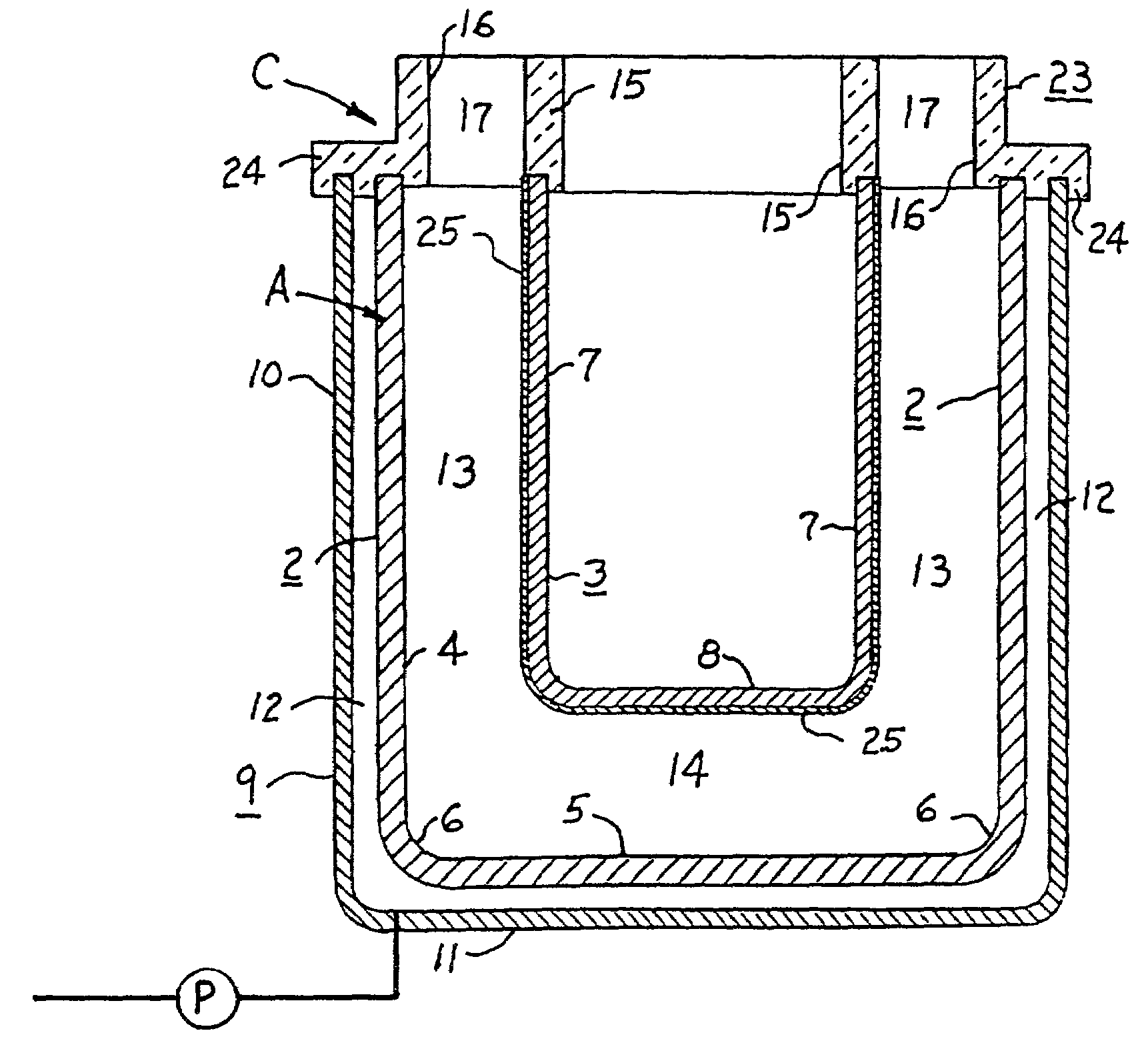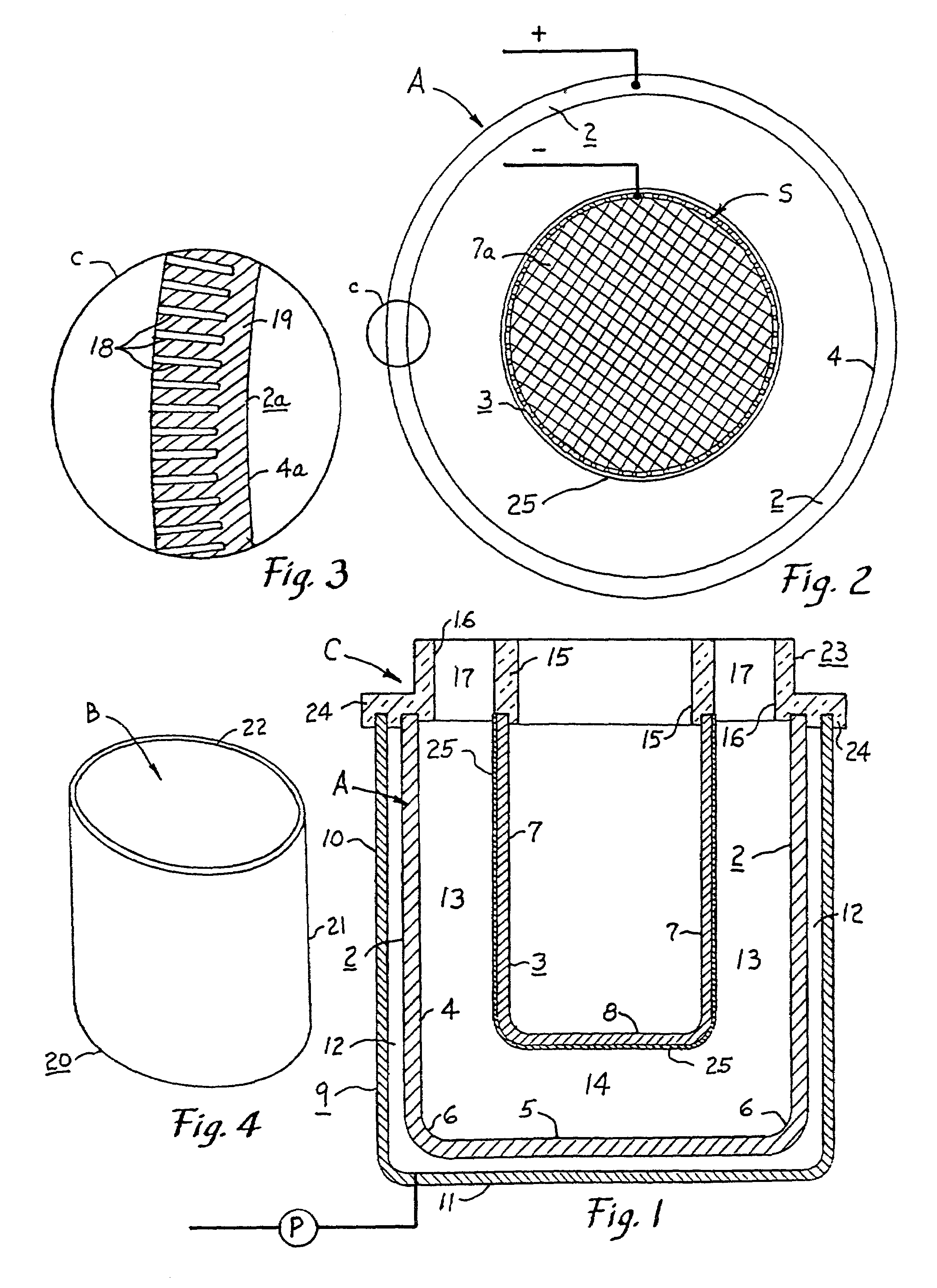Electrophoretic deposition process for making quartz glass products
a technology of electrophoretic deposition and quartz glass, which is applied in the direction of glass making apparatus, glass making tools, glass shaping apparatus, etc., can solve the problems of unsatisfactory deposition of silica particles at the anode, and achieve the effects of simple economical process, limited strength and utility of most glass products, and exceptional durability
- Summary
- Abstract
- Description
- Claims
- Application Information
AI Technical Summary
Benefits of technology
Problems solved by technology
Method used
Image
Examples
example i
[0072]A slurry is prepared by wet milling ultrapure fused quartz in a ball mill using deionized water and ultrapure fused quartz grinding media. The silica particles are milled for an extended period of time more than 24 hours to provide an extremely pure slip or slurry with a pH of from 2 to 4, an average particle size of at least 6 microns, and a solids content of at least 82 percent by weight.
[0073]The micronized silica particles of the slurry are milled for an extended period of time to increase the negative surface charge and provide such particles with the necessary electrophoretic mobility. The negative charge is further increased by slowly adding dilute ammonium hydroxide to the slurry.
[0074]About 20 gallons of a slurry prepared in this manner and having a solids content of at least 80 percent by weight is placed in a large tank or reservoir containing a negative electrode or cathode. A cup-shaped graphite mold or other electrically-conductive shaping mold with a diameter of...
example ii
[0077]A cup-shaped electrically-conductive wire-mesh screen comparable to that shown in FIG. 2 is supported within a cup-shaped graphite mold comparable to that shown in FIGS. 1 and 2 and having an elongated cylindrical shaping surface with a diameter of about 20 inches concentric to the cylindrical portion of the screen. The mold and the metal screen are operably connected to a direct current source that can apply a regulated voltage of from 10 to 70 volts or more, the graphite mold providing a positive anode and the screen providing a negative cathode well suited for electrophoretic casting of silica preforms.
[0078]An ultrapure silica slurry generally similar to that of Example I having an average particle size of from 6 to 8 microns, a pH of from 7.5 to 8.5, and a solids content of about 83 to about 84 percent by weight is poured into the graphite mold to fill the space (13, 14) between the mold and the cathode screen (See FIG. 1).
[0079]The screen is covered by a cup-shaped pervi...
PUM
| Property | Measurement | Unit |
|---|---|---|
| particle size | aaaaa | aaaaa |
| porosity | aaaaa | aaaaa |
| particle size | aaaaa | aaaaa |
Abstract
Description
Claims
Application Information
 Login to View More
Login to View More - R&D
- Intellectual Property
- Life Sciences
- Materials
- Tech Scout
- Unparalleled Data Quality
- Higher Quality Content
- 60% Fewer Hallucinations
Browse by: Latest US Patents, China's latest patents, Technical Efficacy Thesaurus, Application Domain, Technology Topic, Popular Technical Reports.
© 2025 PatSnap. All rights reserved.Legal|Privacy policy|Modern Slavery Act Transparency Statement|Sitemap|About US| Contact US: help@patsnap.com


